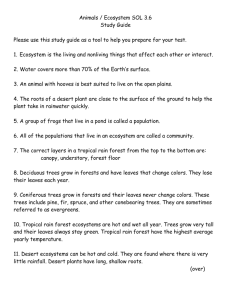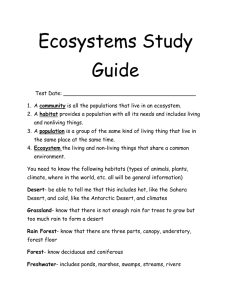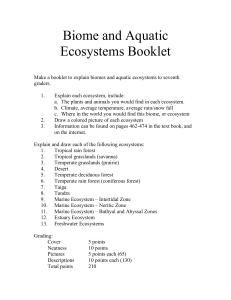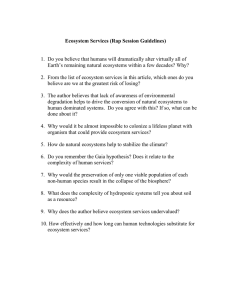Ecosystems
advertisement
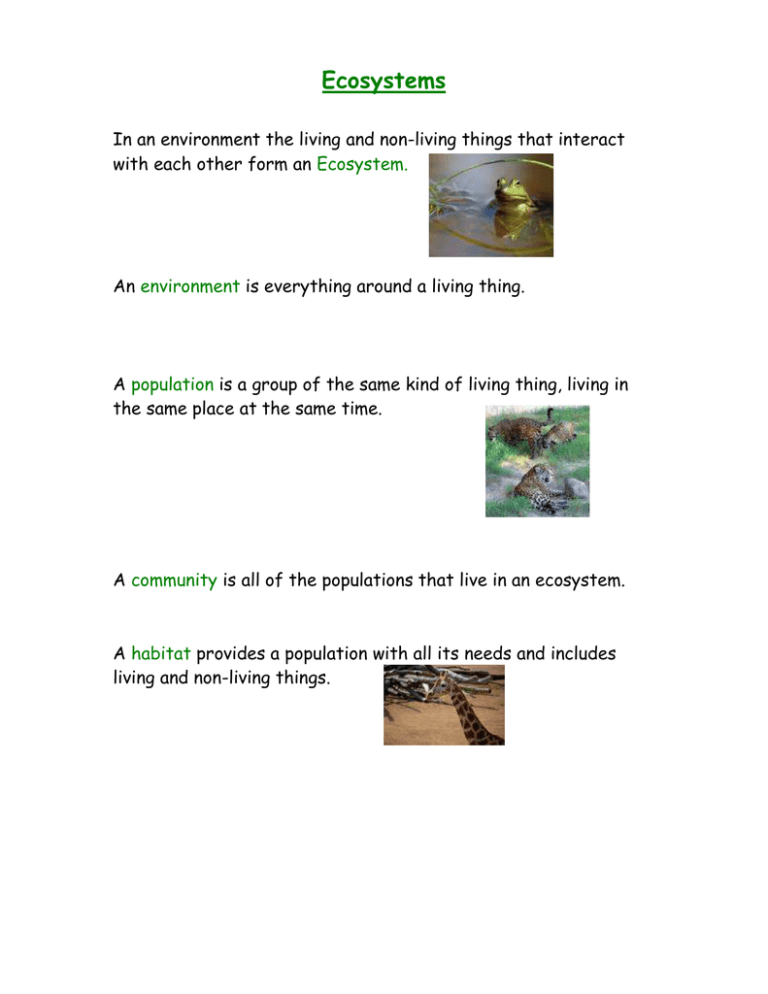
Ecosystems In an environment the living and non-living things that interact with each other form an Ecosystem. An environment is everything around a living thing. A population is a group of the same kind of living thing, living in the same place at the same time. A community is all of the populations that live in an ecosystem. A habitat provides a population with all its needs and includes living and non-living things. Forests: A Deciduous Forest is made up of trees that lose and regrow their leaves each year. They grow in places that have warm, wet summers and cold winters. A Tropical Rain Forest grows where it is hot and wet all year. There are three layers called the Canopy, the Understory , and the Forest Floor. A Coastal Forest grows where there is a lot of rain, but it is not too warm and not too cold. It has the same three layers as the Tropical Rain Forest. A Coniferous Forest is found in places where the summers are cool and the winters are very cold. Mostly you would find conifers, trees that form seeds in cones and have needle like leaves. Desert: A desert is an ecosystem where there is very little rainfall. Desert plants and animals need very little water to live. There are two kinds of deserts, Hot and Cold. Hot Desert: Cold Desert: Grasslands: A grassland ecosystem is made up of large, flat areas of land that are covered with grass. Grasslands are found on every continent, but Antarctica. Water Ecosystems: A body of water that has a lot of salt in it is called a Salt Water ecosystem. In a Salt Water ecosystem the amount of salt may vary from place to place. Near the surface and the shores the water is less salty. A body of water that has very little salt in it is a Fresh Water ecosystem. Rivers, ponds, streams, and most lakes are fresh water ecosystems. There are two kinds of Fresh Water ecosystems, one where there is moving water and one where the water is still. How fast the water moves helps to determine what living things can survive in the water.
